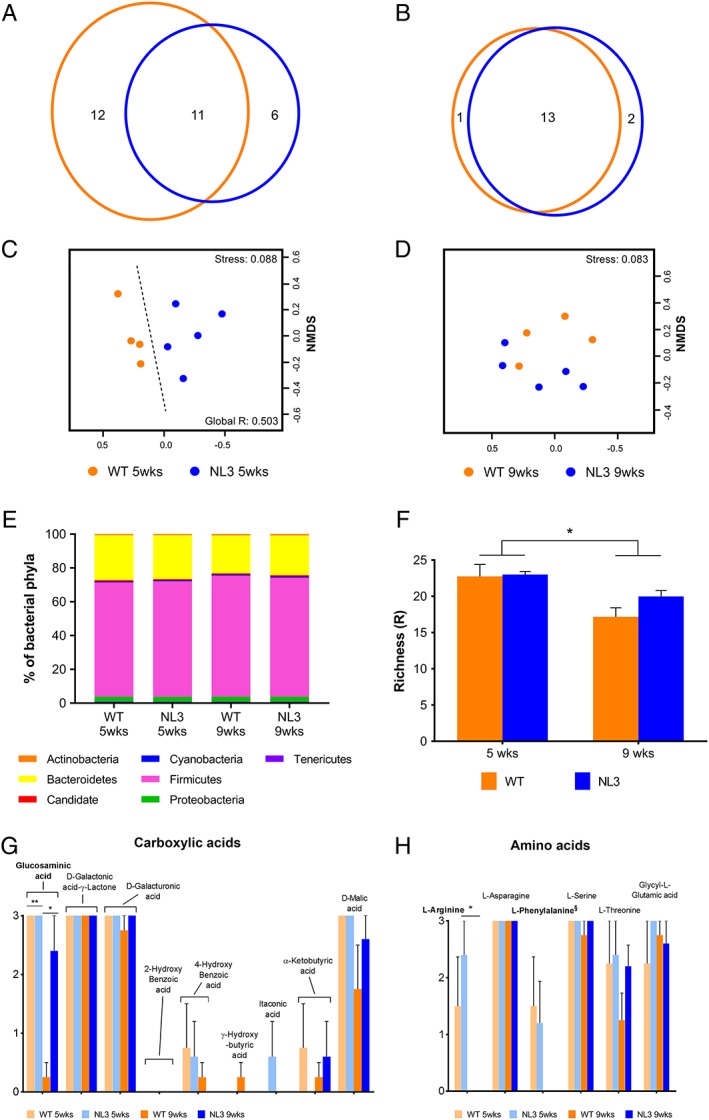Figure 6.

Structural and functional changes of the NL3R451C gut microbial community. The effect of genotype on fecal microbial communities at 5 and 9 weeks of age. Venn diagram of common and unique OTUs within the WT and NL3R451C at 5 (a) and 9 (b) weeks of age. Nonmetric multidimensional scaling ordinations of ARISA generated microbial communities at 5 (c) and 9 weeks of age (d). Significant grouping was observed between WT and NL3R451C at 5 weeks of age (P < 0.01). Dashed line showing genotype effect; decreasing stress values indicate increasing goodness of fit. (e) Average abundances of bacterial phyla in WT and NL3R451C mice at 5 and 9 weeks of age. The average portion of Firmicutes in WT mice increased from 67.67% at 5 weeks of age to 71.82% at 9 weeks of age. This was accompanied by a decrease in Bacteroidetes from 26.63% at 5 weeks of age to 22.50% at 9 weeks of age. A similar trend in NL3R451C microbial communities was observed over time. Firmicutes increased from 68.46% to 70.43% between 5 and 9 weeks of age and Bacteroidetes decreased from 25.94% to 23.54% between ages. (f) Functional richness was decreased in both WT and NL3R451C mice at 9 weeks compared to 5 weeks of age (P < 0.01). Error bars represent SEM. Mean utilization of (g) carboxylic acids (h) amino acid carbon substrates by microbial communities in WT and NL3R451C mice at 5 and 9 weeks of age was derived from Biolog EcoPlates data. Between 5 and 9 weeks of age, carboxylic acid glucosaminic acid utilization was decreased in WT communities (paired t (3) = 11, P < 0.01). Error bars represent SEM. *P < 0.05, **P < 0.01 level. § indicates marginal significance (P = 0.07).
